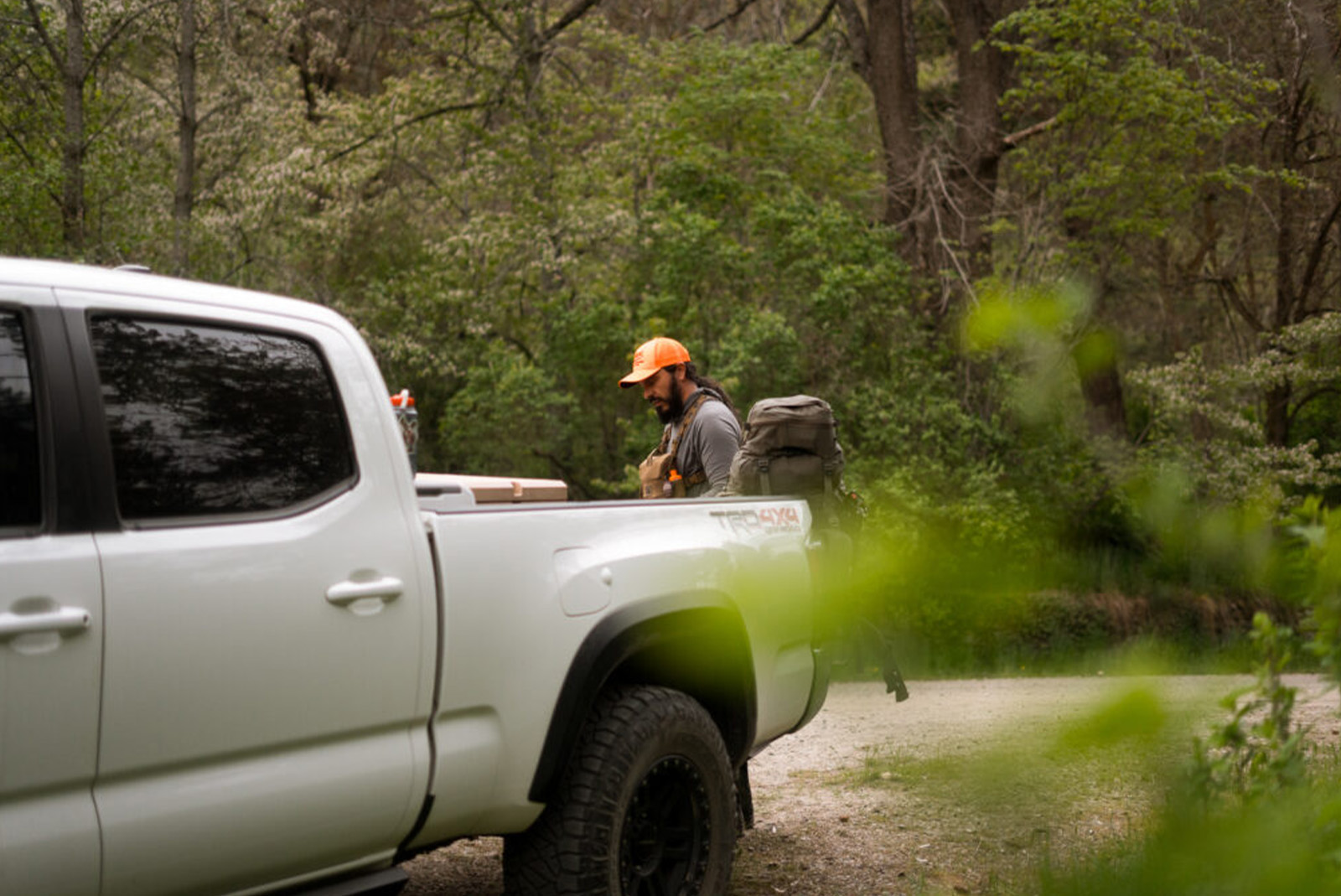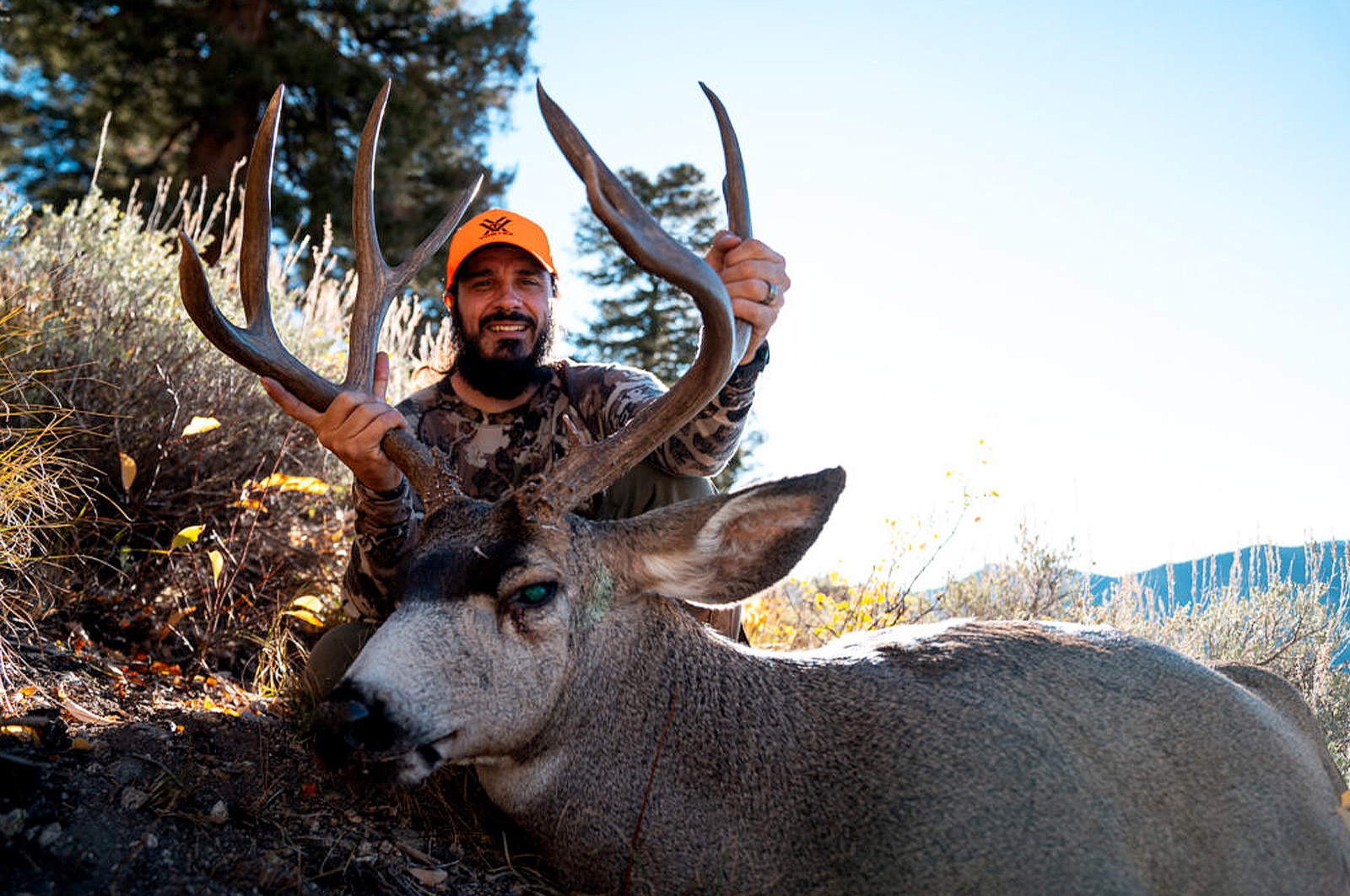If you ask me, there are two hunts on which mule deer get the most press. One is early-season high-country hunts that happen in the August/early September time frame. The other is the late-season rut hunts that can range anywhere between November to January. Both are incredible in their own right, but in between those two points rests even more opportunity to chase this amazing animal, and these October mule deer tags usually aren’t too hard to come by either. They can prove a bit more difficult on the hunting side of things but with some proper e-scouting, hunting mountain mule deer in October can be a huge success.
It may not be the velvet antlers in the high country or the late-season rut fest you dream about, but October is—and always will be—a special month for hunting
Know the Mule Deer
The hardest part about hunting mule deer bucks during the month of October is finding them. So, to do this successfully, we need to understand what a mule deer does throughout the season. In the mountains, there is a natural migration that occurs, and October is a transitional time of year in terms of weather. We’re right on the cusp of starting to feel the first breaths of winter. This means the weather could be hot or there could very well be multiple feet of snow on the ground.

In the mountains, mule deer will spend their summers and the first parts of fall up at higher elevations. It’s generally more open, which favors their sensitive velvet antlers, and there are fewer bugs to contend with. Once they shed their velvet, they’ll start to move down in elevation a bit—generally, right on the edge of the alpine, from what I’ve witnessed. And as winter sets in, mule deer will move down in elevation even more while on their way to their wintering grounds. The key is catching them on their move or before they do so.
If I see a buck on an eastern face at 7800 feet at 4 P.M., there is a good chance I could go to a similar area at a similar time and see deer.
Elevation and Topography To Pay Attention To
To narrow down the country to focus my efforts on, I like to first note what I’d deem to be summer grounds. These are higher elevation areas (9-10k+), often above treeline. From there, long gradual ridges that parallel one another and hold big swings in elevation catch my eye. The long ridges (and drainages between them) I speak of are often used as natural travel corridors for deer down to the lower country. Any south or east-facing hills and basins will receive a Waypoint from me as well along these stretches. This setup will allow you as a hunter to essentially work the tops of these ridges, glassing off both sides, until you find the “deer zone.”

A phenomenal tool to narrow down these areas is TerrainX. Once you have a good idea of the general elevation band of summer ground vs. winter ground in your hunting area, highlight that elevation spectrum with TerrainX. This will help you see what you need to see and weed out a lot of other country.
A good starting point in my eyes is right in between the higher and lower elevations. So, if the range you’re looking at is from 10k feet all the way down to 6k feet, maybe start your search right around the 8k mark. If it’s hot and you’re not seeing anything, you’ll be able to push up higher, and the opposite goes for if it’s snowy and cold to go lower. Ideally, you’ll be right on top of them in their natural movements.
Broken Country Allows for Glassing AND Cover

Being able to glass with high-powered optics is a huge advantage as a mule deer hunter. To do that successfully, you need a certain amount of visibility. And a fine line at that, because bucks are often timbered up this time of year. This is why looking for a mixture of both timber and open slopes is key. Broken country like this will allow deer to disappear if they want, but also give them access to the feed in the open.

You can see this broken country I speak of via satellite imagery. You’re looking for open meadows with pockets of timber. Focusing your efforts on places like this will cater to glassing and the ideal habitat the bucks are using this time of year. Make sure water is around too. You don’t have to be right on top of it, but it does need to be present in the general area. This could be anything from a creek to a tiny seep on the side of a mountain.
South and east faces are my favorite faces to glass, so I like to find high points that cater to these views. An east face puts the sun at your back in the morning lighting up the hill in front of you and in your face in the evening. This may not sound fun looking into the sun, but trust me. This means you’re now looking into the shade, which is where animals gravitate toward when hot and inevitably get up to feed at the end of the day. I’ve watched it time and time again. South and east faces.
Know Your Access Points and Have Backup Plans
The October general hunts can be crowded, and the deer know that. To try and stay away from folks, I like to mark access points with trails that take me into the general country I want to hunt, but then break off of the trail and hunt country away from it. Access point Waypoints will be pre-dropped on parking areas and areas where I plan to break away from the trail. From there, I like to use the Line Distance Tool to map out how far my general hike from the truck is, as well as how far I need to hike off-trail to reach my destination. This can provide perspective on how early I need to leave the truck and how late I’ll be back from hunting. Like I said earlier, ideally I can find a main ridgeline to work along and glass from throughout the day.

Because of the vast amount of variables attached to hunting, it’s important to have backup plans in place should certain areas not pan out. In my eyes, this is rather simple. Simply transpose the criteria I’ve laid out already to other similar-looking areas. By the end of your e-scouting, your onX Hunt App might look like a Christmas tree with all of the pins on it, but you’ll be walking into your hunt armed to the teeth with a plan.
And if you do find deer while you’re out, note the elevation, face, and time of day. This can also be transposed to other areas to find bucks. For instance, if I see a buck on an eastern face at 7800 feet at 4 P.M., there is a good chance I could go to a similar area at a similar time and see deer.
October Is a Special Month for a Hunter

From as far back as I can remember, October has always been associated with hunting season, and nowadays that isn’t any different. The leaves have turned as have the temperatures. So, if mule deer are your flavor, don’t overlook this incredible month. It may not be the velvet antlers in the high country or the late-season rut fest you dream about, but October is—and always will be—a special month for hunting. And with what we’ve talked about here, you’ll set off on the right foot towards a mountain mule deer of your own. The rest is in your hands.